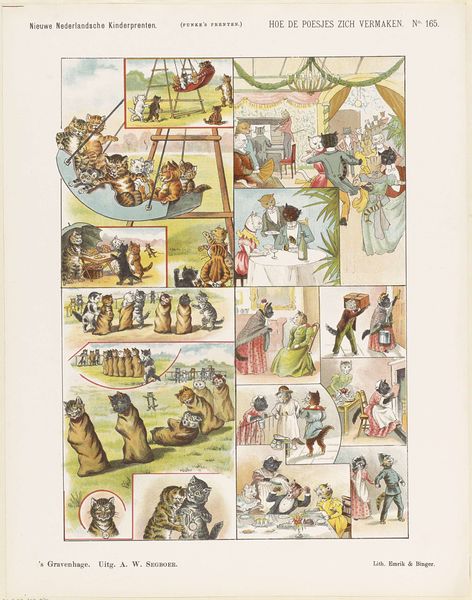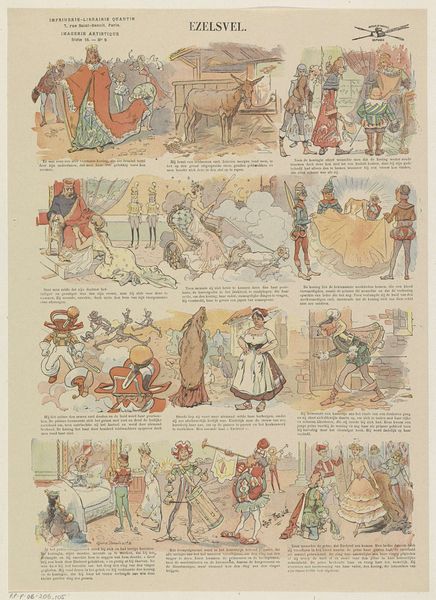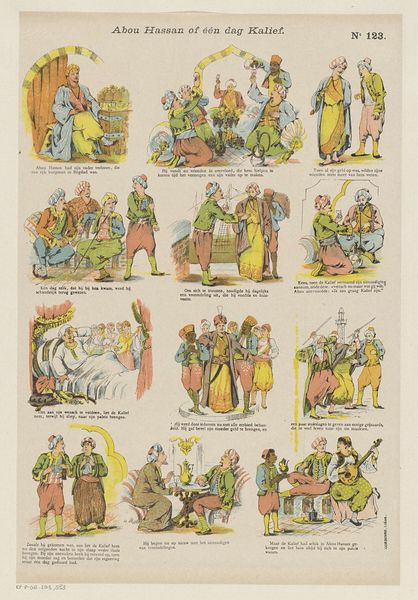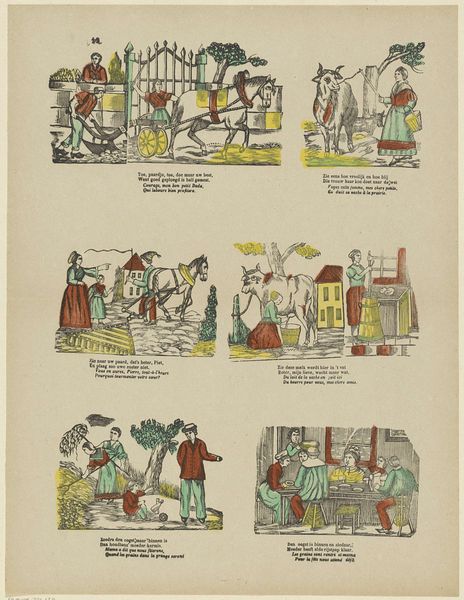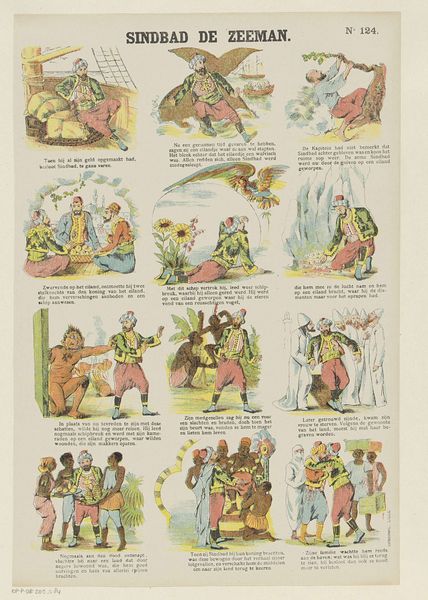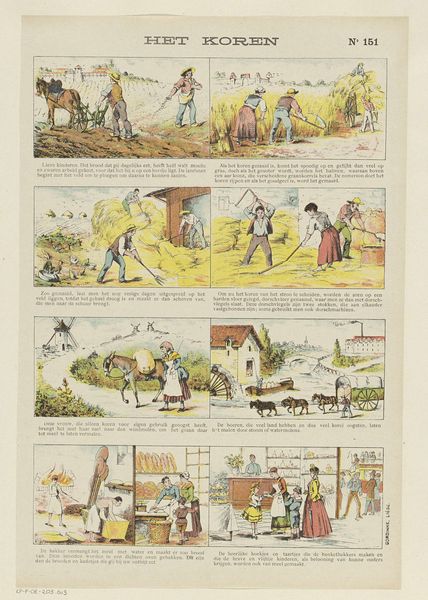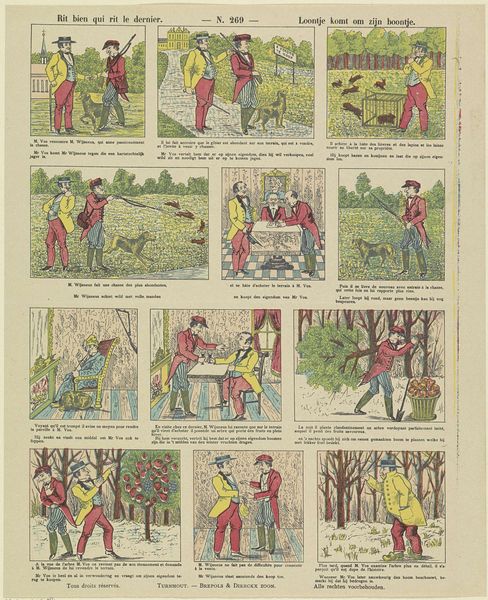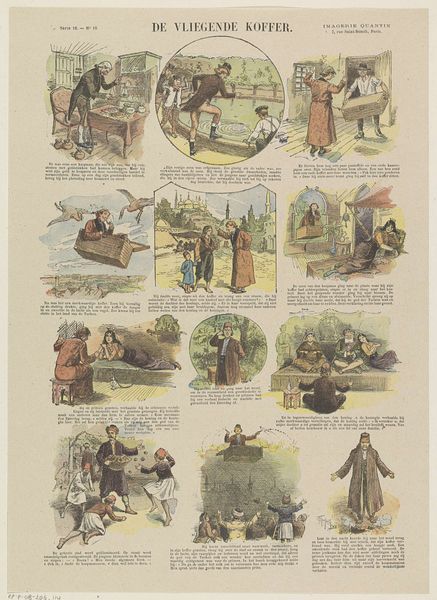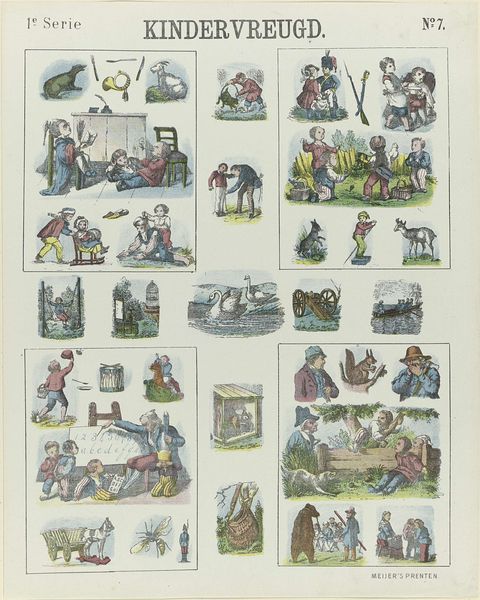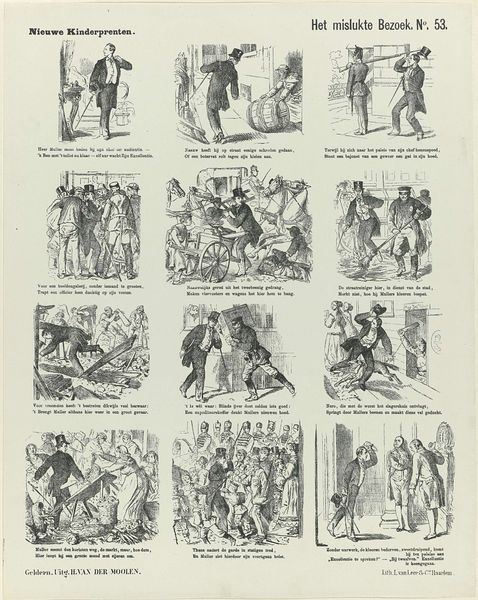
drawing, tempera, print
#
drawing
#
toned paper
#
narrative-art
#
tempera
# print
#
sketch book
#
personal sketchbook
#
sketchwork
#
sketchbook drawing
#
watercolour bleed
#
watercolour illustration
#
genre-painting
#
storyboard and sketchbook work
#
sketchbook art
#
watercolor
Dimensions: height 369 mm, width 264 mm
Copyright: Rijks Museum: Open Domain
Curator: Here we have "Te veel muziek," or "Too Much Music," a print by Albert Quantin dating from 1876-1893, executed using drawing and tempera. Editor: It feels like a comic strip, or maybe storyboard—different scenes depicting the same characters within a unified setting. The color palette is muted, lending a vintage air to the whole piece. Curator: Indeed, its narrative style suggests a sequence of events. It appears we’re watching the tribulations of a landscape painter plagued by musically inclined children. Editor: I’m struck by how much the artist’s frustration comes through. You can practically hear the cacophony he’s enduring. Curator: Music has always held ambiguous associations, linked both to harmony and chaos. The composer represents the established order—of creation and inspiration—disrupted by untamed youthful energy. Look closely: the figures on this sheet are presented to underscore the emotional response. The characters dressed in Grecian clothes seem to signify harmony; as a counterpoint to the painter’s increasingly flustered expression! Editor: It's interesting that the children all look quite poor. Are they perhaps bartering their music lessons to appear in the artist's painting, hoping it is successful and he pays them? Curator: A fascinating point! The print acts, thus, as a reminder that patronage often comes with a price—and that artistic production depends on various forms of social exchange and pressure. He’s being literally hounded. Editor: To create the lithograph it looks as though it was executed by a few stone plates. Given its muted nature of printing process, do you think that its composition and intent remains fully as it was envisioned by Quantin, or were concessions needed based on his printer? Curator: Certainly, some details get smoothed over, details lost between the artist and their printing support team. All that, yet somehow still full of human feeling. Editor: Yes, ultimately this "Too Much Music" resonates because it captures a timeless creative challenge: noise interrupting thought!
Comments
No comments
Be the first to comment and join the conversation on the ultimate creative platform.
